Lord of the Jungle
Created by Filmation for CBC Tarzan, Lord of the Jungle is easily the most faithful of all screen-based adaptations as the creators of this show drew heavily from the books. With artwork based heavily on the works of legendary comic strip artist Burne Hogarth the look of the show surpassed much of its Saturday morning contemporaries, with the use of rotoscoping it gave Tarzan a smooth and graceful look that meshed beautifully with the fantastic foreground and background paintings of the series’ talented art department. Sure if you watch these episodes back to back you will notice that the same shot would be used again and again, but as a kid that’s something you’d never pick up on.The very first episode sets the tone of the series by somehow successfully adapting the book Tarzan and the City of Gold, of course it’s not a point for point adaptation, after all they only have 25 minutes to work with, but it hits all the high points of the story; Tarzan (voiced by Robert Ridgely) is washed down a river to the shores of Athne, a golden city ruled by the cruel Queen Nemone. He is imprisoned with the boastful Phobeg (voiced by the great Ted Cassidy who played Lurch on the Addams Family) who he easily defeats in the arena; his sparing of Phobeg’s life earns him a friend and later an aid to his escape. In just one short TV episode they were able to include Tarzan’s refusal to kneel before the Queen, her falling in love with Tarzan and her reaction to being rebuffed, the sneaky advisor Tomas whose afraid of the Ape Man’s influence over the Queen, and Tarzan tangling with lions of this magnificent lost city. I'm still waiting for filmmakers to come even close to this episode when it comes to bringing forth pure Tarzan fun.
It's not really a Tarzan show without a lost city.
The
show full utilizes Burroughs’s lexicon of ape languages as well as
locations and characters straight out of the books. Tarzan is often
aided by the great apes known as manginis, and he has to defeat the
talking Bolmangani (gorillas) who live in the Palace of Diamonds and enslave the locals. He encounters the Knights of Nimmr, a lost city of crusaders, and though not much more than the name is taken from book Tarzan, Lord of the Jungle
it still captures the flavor of Burroughs’s writings. The writers of
this show didn’t just restrict themselves to the books as over the first
season Tarzan encountered the evil Queen Nubia in "Tarzan and the City of Sorcery" whose clever stagecraft made her people believe she had magic powers, and in "Tarzan and the Vikings" our Ape Man ran into a village of Norsemen that needed a lesson in freedom.In the Burroughs Tarzan books stories didn’t really venture into science fiction but on this show Tarzan encountered aliens that had come to Africa to collect specimens for their space zoo, and if Tarzan had ever seen an episode of The Twilight Zone he'd have known to avoid the whole situation.
Why does this saucer look like it's tied down like a circus tent?
One
of the tropes that pops up in several of Tarzan books is a double or
Tarzan look-a-like that causes our hero much grief, in this cartoon
series we don’t get Esteban Miranda impersonating Tarzan as we did in Tarzan and the Jewels of Opar, or actor playing a jungle hero in Tarzan and the Lion Man,
but instead it’s a couple of villains using a robot Tarzan to discredit
Tarzan among his jungle friends so that they can pillage the vaults of
Opar. Which puts Tarzan in a class with Steve Austin The Six Million Dollar Man when it comes to evil robot doubles.
"Look out Tarzan, it's Masketron!"
Note:
This series is very in keeping with the bulk of the Tarzan books by
it's complete absence of Jane. Burroughs had a dickens of a time
working Jane into his jungle adventures so he often left her out
completely, and in this Filmation series Jane isn't even mentioned.One popular reoccurring character from the books that is missing is La, the High Priestess who rules the lost Atlantean city of Opar. Strangely enough the series visits Opar twice yet never do we see it occupied by the descendants of Atlantis or their high priestess. In Tarzan’s Rival it looks completely abandoned and in the episode Tarzan the Hated the Bolmangani Emperor wants to rebuild his city in the Opar region. I guess a half-naked woman who likes to sacrifice people to the Sun God wouldn’t go over to well with the censors of the time. Opar wasn’t the only location that got a bit of a short shrift as the episode based on Tarzan at the Earth’s Core has almost nothing from the source material. In this cartoon version the land of Pellucidar could be accessed from a crater in the middle of the African jungle, and no longer is Tarzan searching for the missing David Innes while aboard a dirigible he had commissioned for the job, instead we have him managing a Romeo & Juliet style relationship between two races of cave people. We did at least get Tarzan facing off against dinosaurs, so that was cool.
"Say ahhhh!"
As
faithful to the spirit of the source material the people at Filmation
wanted to be they had one major obstacle and that would be the Broadcast Standards and Practices.
Studios were severerly hamstrung when it came to showing violence in
shows that were marketed to children; this is not a big deal if your
show is Scooby Doo or My Little Pony
but if your show is based on a character who is known for fighting and
killing his opponents with a knife or his bare hands that is a bit of a
problem. This was also a huge and issue many will be familiar with in
the case of the Super Friends
where Batman was not allowed to punch people. That’s what Batman does,
how do you work around that? So instead of stabbing lions or coldcocking
this week’s villain Tarzan was relegated to Judo flips and dodging. So
at times Tarzan comes across more as Jungle Pacifist than Tarzan, Lord
of the Jungle.Also this version of Tarzan is a friend to all animals and rarely actually has to fight one of his furry friends, and to make the show more palatable to parent’s group most episodes would have Tarzan giving a lesson on various topics such as freedom, the dangers of pride, greed, and the rights of others. This moralistic tag would become a staple for such cartoons as G.I. Joe: A Real American Hero.
“And knowing is half the battle.”
Filmation’s Tarzan, Lord of the Jungle ran for four seasons between 1976 and 1979 totaling 36 episodes in all, but only the first season was Tarzan on his own. In season two he became part of The Batman/Tarzan Adventure Hour and then later as Tarzan and the Super 7 which featured such characters as Batman & Robin, Web Woman, Isis, Super-Samurai, Sinbad, Merlin, and Hercules, Micro Woman and Super Stretch, Moray and Manta, and the live-action Jason and the Star Command.Sadly Tarzan and Batman never actually team up to fight crime.
Decades later we got the decent Disney's The Legend of Tarzan series that was based on their hit animated movie, but as good as that show was it still strayed drastically from the source material, so it seems we may be waiting a while for the definitive adaptations of the Tarzan books by Edgar Rice Burroughs. The Filmation series did a damn find job with the tools they had and with the restrictions they were under, and though closest to the feel of the books it's still not quite the Tarzan I grew up reading about.Sadly only the first season is available on DVD it’s something I highly recommend to fans of Tarzan as its loads of fun as well as being one of the more faithful versions of the character.
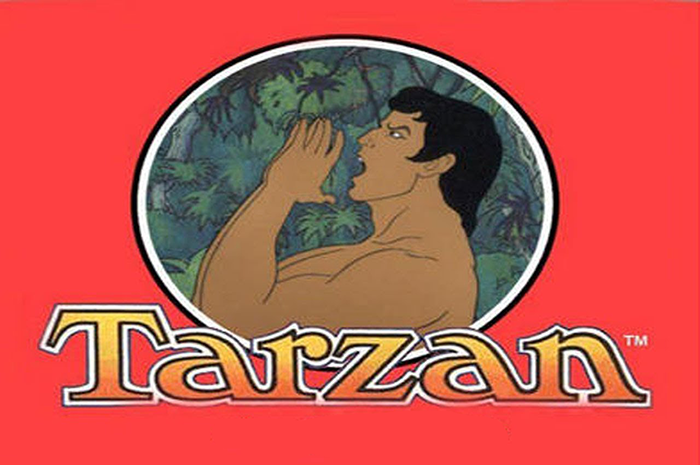
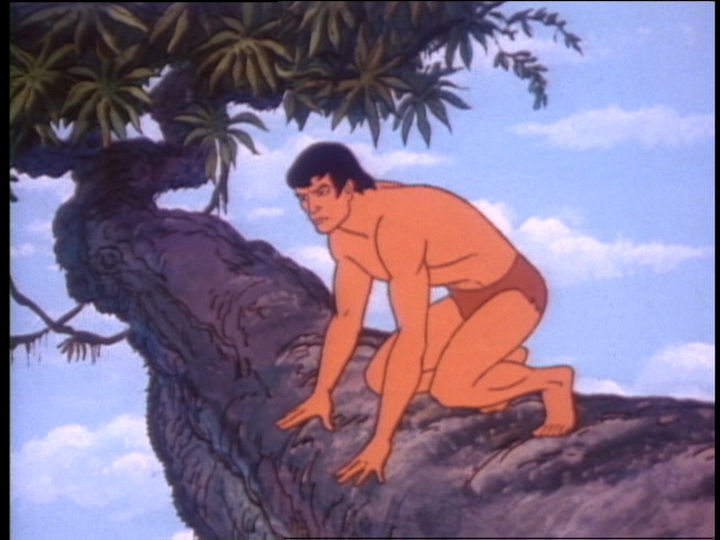
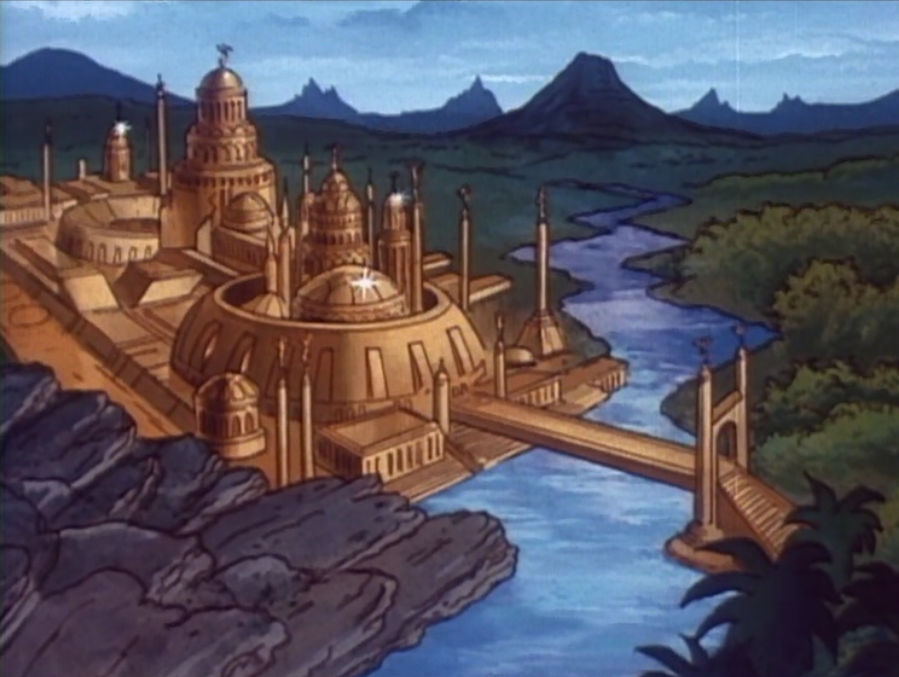

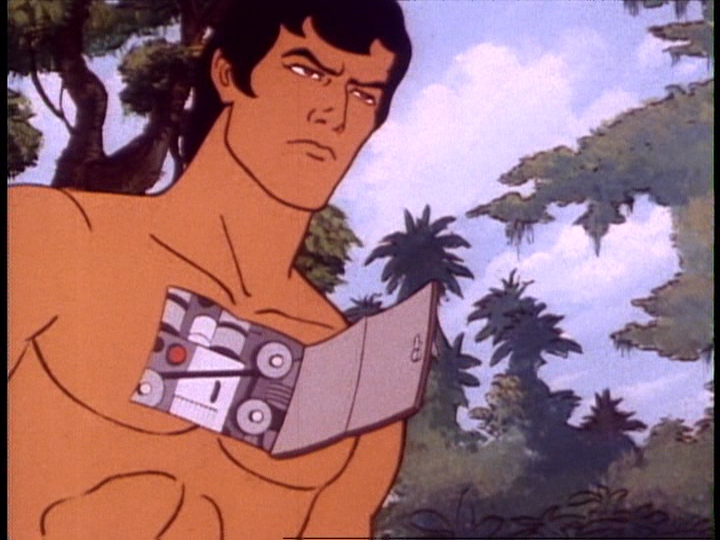
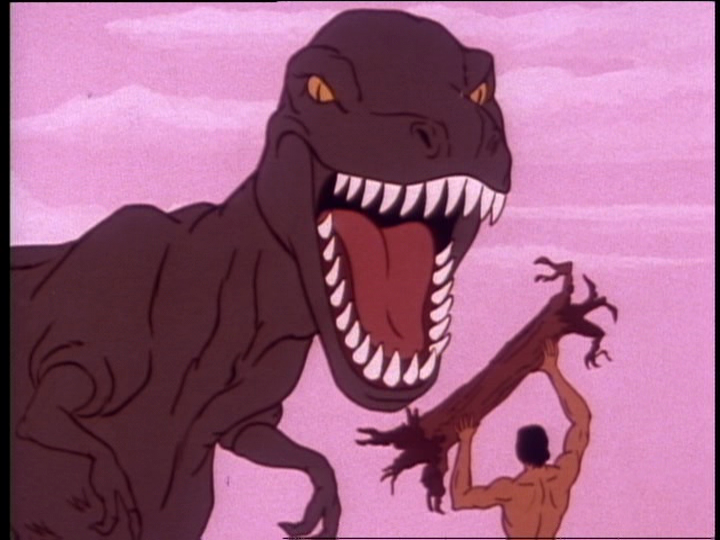

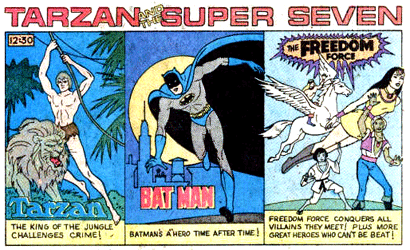

1 comment:
I loved this series, and have my own page on it.
Post a Comment